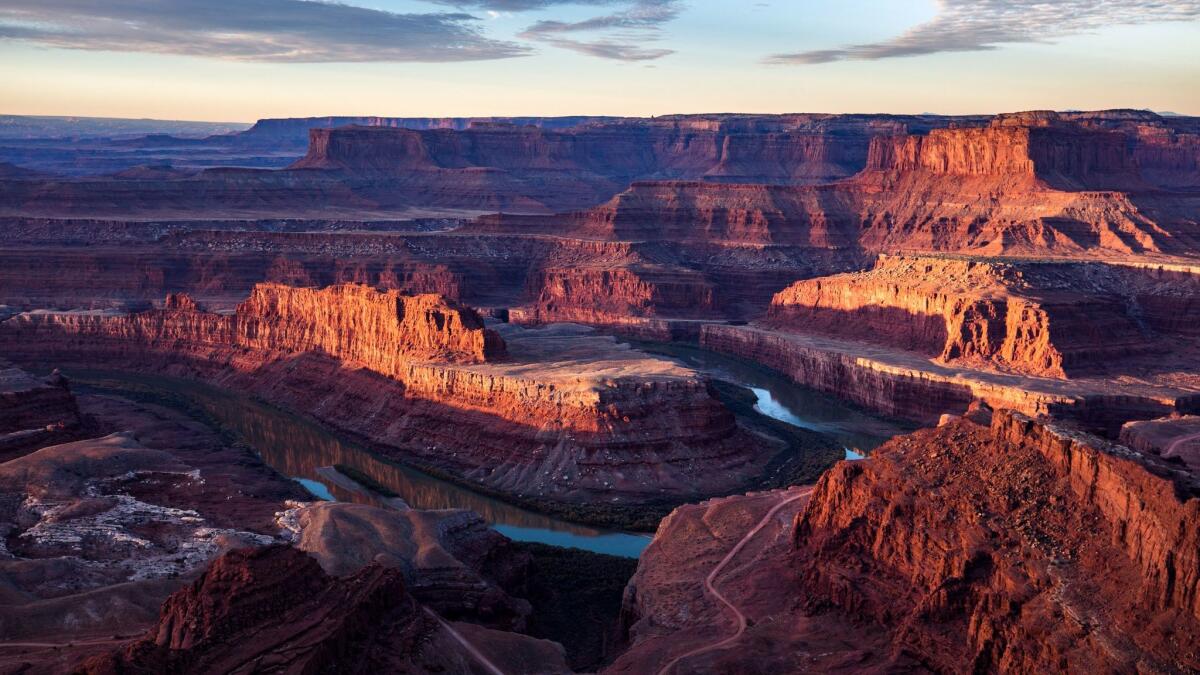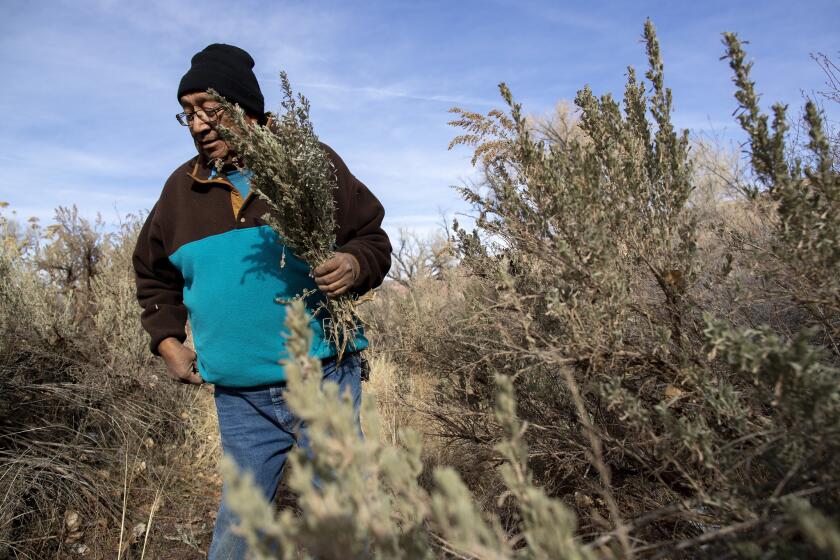Trump team finalizes plans for drilling, mining in shrunken Utah national monuments

- Share via
SALT LAKE CITY, Utah — The U.S. government implemented final management plans Thursday for two national monuments in Utah that President Trump downsized. The plans ensure lands previously off-limits to energy development will be open to mining and drilling despite pending lawsuits by conservation, tribal and paleontology groups challenging the constitutionality of the president’s action.
The lands have generated little interest from energy companies in the two years since Trump cut the size of Bears Ears National Monument by 85% and Grand Staircase-Escalante National Monument by nearly half, said Casey Hammond, acting assistant secretary for land and minerals management with the U. S. Department of the Interior.
Hammond said in a conference call the department had a duty to work on the management plans after Trump signed his proclamations in December 2017, despite the pending lawsuits that seek to return the monuments to their original sizes.
“If we stopped and waited for every piece of litigation to be resolved we would never be able to do much of anything around here,” Hammond said.
Market dynamics have limited the interest in a large coal reserve located on the now unprotected lands cut from Grand Staircase and uranium on lands cut from Bears Ears.
But an economic analysis by the federal government estimates that coal production could lead to $208 million in annual revenues and $16.6 million in royalties on lands cut from Grand Staircase. Oil and gas wells in that area could produce $4.1 million in annual revenues, the analysis says.
If market forces shift, Hammond said the lands remain under federal control and governed by “time-tested laws” and subject to environmental regulations. He rebuffed the oft-repeated claim from conservation groups that there would be a “free-for-all” for mineral development.
“Any suggestion that these lands and resources will be adversely impacted by the mere act of being excluded from the monuments is simply not true,” Hammond said.
Trump cut the size of the monuments following review of 27 national monuments by then-Interior Secretary Ryan Zinke. He recommended shrinking two other monuments as well, but Trump has yet to take action.
Trump said he scaled back the size of the monuments to reverse misuse of the Antiquities Act by previous Democratic presidents that he said led to oversized monuments that hinder energy development, grazing and other uses. The move earned cheers from Republican leaders in Utah including former U.S. Sen. Orrin Hatch.
Conservation groups have called Trump’s decision the largest elimination of protected land in American history. They criticized the Trump administration on Thursday for spending time on management plans they believe will become moot when the court sides with their assertion that it is Trump, not his predecessors, who has misused the Antiquities Act.
President Clinton created the Grand Staircase-Escalante National Monument in 1996 on lands home to cliffs, canyons, waterfalls and arches in southern Utah. In 2016, President Obama created Bears Ears National Monument, a scenic swath of southern Utah with red rock plateaus, cliffs and canyons, on land considered sacred to tribes.
“It’s the height of arrogance for Trump to rush through final decisions on what’s left of Bears Ears and Grand Staircase Escalante while we’re fighting his illegal evisceration of these national monuments in court,” Randi Spivak, public lands director for the Center for Biological Diversity, said in a statement. “Trump is eroding vital protections for these spectacular landscapes. We won’t rest until all of these public lands are safeguarded for future generations.”







